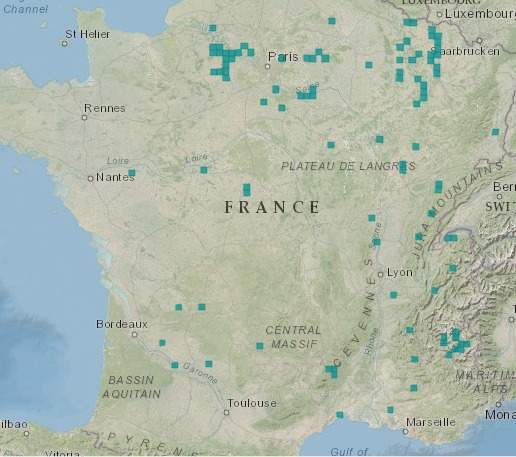Cicadetta montana, the Mountain Cicada or Little Mountain Cicada
It is very difficult to seperate visually this species from Cicadetta brevipenni with the use of sound recording or DNA being the only reliable methodology where the two species are known to be present.
Females have a body measuring about 50 mm long, males being much smaller. The wings are transparent with prominent veins, folded on the back at rest. The body is dark slate gray or black with dull orange rings around the abdomen. The legs are marked with dull orange as are the leading edges of the wings (costae).
Although very sparse the range of this species covers a significant part of the northern half of France and it is likely that further research will extend this coverage. They seem to be more frequent in the east, at the level of the reliefs of the Jura, the Vosges, the Ardennes and the Haute Marne. Further west, observations are occasional. Their presence is noted in Essonne [Sueur & Powerful, 2007] and a population was discovered in Marigné-Laillé in the department of the Sarthe, currently constituting the the westernmost station. (Map below helps).
Adult
activity is from May until August with peak activity in June
NOTE: This species has a small colony in the UK in the New Forest
You can listen to sound files HERE

